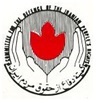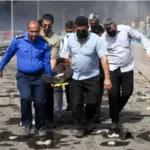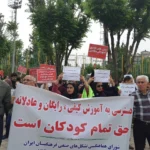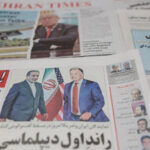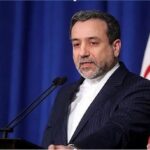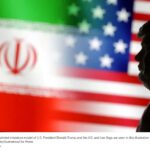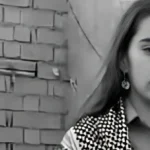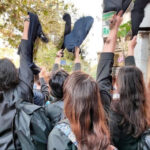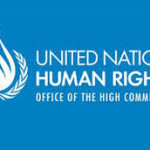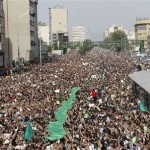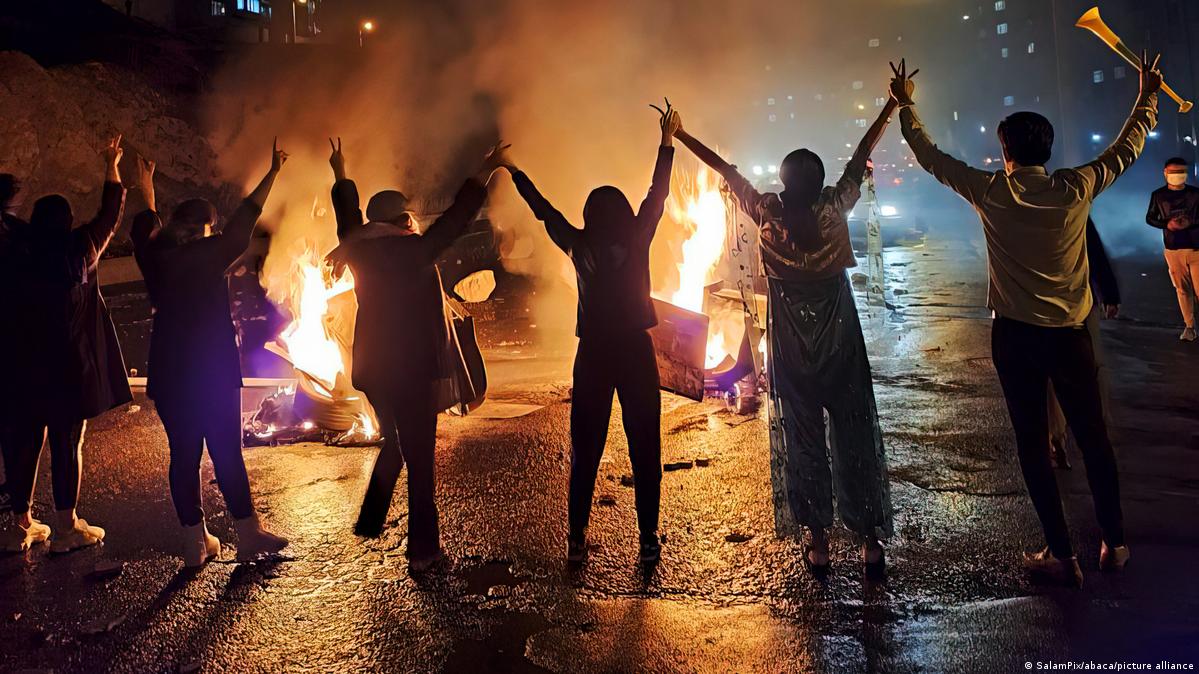
The occurrence of the vernal equinox (on Monday 20 March or Tuesday 21 March 2023, depending on time zone) marked the beginning of Nowruz, the Iranian New Year, an ancient festival observed in one form or another by an estimated 300 million people around the world.
This year, the festival – essentially a celebration of the hope and rebirth heralded by the arrival of spring – is especially poignant given that it comes on the back of six months of popular protests in Iran against the ruling theocratic dictatorship, which have clearly served to shaken the regime to its very core and greatly deepen its crisis of legitimacy.
The protests began in the wake of the killing of 22-year-old Kurdish-Iranian woman, Mahsa Amini, at the hands of the regime’s so-called “morality police” or “guidance patrol” on account of her alleged failure to adhere to the rules regarding mandatory hijab. At first, the protests centred on the issue of mandatory hijab, as well as the regime’s empowering of brutal militias to enforce the policy, but soon escalated into calls for an outright end to the entire authoritarian system of theocratic rule.
Despite the initial apparent dumbfoundedness on the part of the authorities at the protests’ spread; the enthusiasm and zeal with which they were greeted in many quarters, with the country’s women taking a leading role; as well as their continuation, as days turned to weeks then to months, the regime soon moved to its default recourse and launched a brutal clampdown on the protesters and dissident currents. This has resulted in the killing of around 600 people (including more than 70 minors), the execution of at least four more, and the arrest and detention of around 20,000 people – many of whom were subjected to maltreatment and torture during their incarceration. Tellingly, the Iranian government has refused to release even its own figures regarding the numbers killed over the last six months.
On International Women’s Day a representative of the Democratic Organisation of Iranian Women (working closely with CODIR) addressed a meeting on women’s rights in Iran, Sudan and India in the House of Common:
“The prominence of women at the forefront of these protests has led to their targeting and singling-out by the regime’s enforcers for especially horrific treatment… Countless women have been blinded, injured, and maimed by the regime’s enforcers, while their calls for freedom have been perversely seen as a green light by these same thugs to sexually abuse, rape, and torture them upon their arrest. The forced disappearance of protesters has become commonplace. The battered and mutilated bodies of many women have been found days after their disappearance, and the families of those killed are then themselves intimidated and attacked during subsequent attempts to hold a funeral or mourning ceremony.
Uprising
The general growing antipathy among Iranian people towards the ruling regime and the broad inclusiveness of the core “Woman, Life, Freedom” slogan allowed for the drawing-in of a large swathe of Iranian society to the protest movement. Furthermore, and importantly, this movement was not a standalone phenomenon… It represented a direct continuation of previous recent popular uprisings in the country in 2017, 2018, and 2019.
A central thread running throughout these uprisings has been the catastrophic and ever-worsening economic crisis in Iran, which is primarily the end-result of the regime’s implementation of neoliberal economic policies from the early-1990s onwards. In the aftermath of the disastrous Iran-Iraq War – a conflict it can be legitimately stated that both countries are still reeling from today – the Iranian government moved sharply away from its until-then largely state-controlled economy and set about essentially implementing economic shock therapy and IMF/World Bank-prescribed overhauls. (By illustrative comparison, Saddam Hussein’s solution to largely the same problem was to try and recoup Iraq’s losses by invading Kuwait…) The effects of this neoliberal overhauling of the Iranian economy have been disastrous and long-lasting… According to official government statistics, more than 40% of the country’s population lives below the poverty line – though the situation is believed to be much worse in reality. This crisis is compounded by endemic corruption and cronyism, all overseen and held in place by a fiercely repressive dictatorship which can be legitimately characterised as reactionary and misogynistic.
Discrimination
The intensification of gender discrimination, along with class discrimination, is the result of the dominance of “Political Islam” and its regressive norms. According to the latest official statistics, 60% of educated women are unemployed while 70% of Iranian women do not have stable jobs or income. In the spring of 2022, the economic participation rate of women was reported as 13.7%, which is less than one fifth of the rate of their male counterparts (69.1%).
The Islamic Republic’s constitution has essentially entrenched and normalised discrimination against women across society – not least in the fields of education and employment, thereby hindering any real opportunity to attain economic independence. This is compounded by the imposition of the mandatory hijab; the issuing of edicts obliging marriage and the bearing of more children, all weighed in favour of the male party to the relationship; as well as the passing of regressive laws, the application of which subordinate women and make them even more vulnerable to the all too commonplace abuse, harassment, and threatening of women in the public sphere.
In this uprising, women have once more demonstrated their key and prominent historical role in advancing the cause of social justice in Iran. The movement under the “Woman, Life, Freedom” banner has quickly galvanised support beyond Iran’s borders and has even been referred to as a “women’s revolution” in some quarters.
However, the reality remains that the Islamic Republic regime will seek to maintain its brutal rule whatever the cost to the people of Iran – and the country’s women will bear the brunt for as long as that remains so.
This is undoubtedly a perilous time for the progressive currents, including the women’s movement and independent trade unions in Iran. Western powers have deployed their propaganda machinery and wider resources in an attempt to commandeer the nascent popular movement and control the narrative of developments, particularly outside Iran and in the diaspora.
However, it is important to stress that the people of Iran have learnt from the painful experience of the hijack and defeat of the February 1979 Revolution that replacing one autocratic regime with another can never satisfy the enduring demands of the overwhelming majority for freedom, independence, and social justice.
The people of Iran remain resolutely opposed to any outside interference – whether from Western powers or reactionary regimes in the Middle East region – in the internal affairs and course of political developments of the country. Such matters are the sole remit of the Iranian people themselves.”
What is needed for the ultimate success of the movement is a coalition of political forces that can gain the support of the working people and popular strata with a joint action plan to meet the urgent demands of the majority of the Iranian people.
A hugely encouraging development to this end is the issuing in February of a 12-point charter by a coalition of independent trade union and civil organisations inside Iran, with the Central Council of Iranian Teachers Trade Associations (CCITTA) foremost among them and a central driver of this major initiative. This development has been warmly welcomed by progressive currents inside Iran and publicly endorsed by the incarcerated former prime minister and leader of the opposition Green Movement, Mir-Hossein Mousavi, amongst other high-profile public figures in Iran.
The charter includes provisions such as the immediate and unconditional release of political prisoners; the public trials of the perpetrators of suppression of the popular protests; freedom of opinion, expression (including the media), assembly, and industrial action; and immediate abolition of the death penalty as well as any type of torture. The recognition of women’s rights as equal to those of men has also been emphasised in the charter.
What’s more, this initiative is one borne of the progressive movement inside Iran – it is legitimately seen as a call and solution emanating from the people for the people – and thus punctures the narratives of right-wing and reactionary “opposition” groups in the diaspora, which have no popular base inside the country and are utterly divorced from the objective realities of life there. The importance of this cannot be overstated.
It is clear that the Islamic Republic regime, while remaining in place, nevertheless faces a multi-faceted crisis of epic proportions – and arguably the gravest since its hijacking and sabotage of the popular 1979 Revolution and the onset of the bloody Iran-Iraq War.”
Going forward
While the regime appears to have managed to “ride-out” the protests of the last six months and undoubtedly retains a core, albeit shrinking, base of support, the fundamental contradiction between its own discourse (the absolute authority of the jurist; the representation of God’s will on Earth) and that of the vast majority of people in Iran (human rights; democratic freedoms; equality and women’ rights) remains and is not going to disappear. This continuing standoff can only lead to further polarisation of society, with the rate of public participation in elections and the political process already in steep decline. Thus, we witness the current scenes in several districts of Tehran and cities throughout Iran during Nowruz, where women are present in public spaces without the hijab… Contrast this with the rhetoric of the regime’s ‘supreme leader’, Ali Khamenei, just last summer when he essentially called for a return to the spirit and murderous values of 1981 – widely interpreted as a green light to regime militia and supporters to ramp up enforcement of rules relating to the public sphere, including mandatory hijab.
On top of the regime’s existential woes at home, it must also contend with growing isolation internationally and the threats posed by other regional actors. This reality is instructive when considering the recent unexpected development vis-à-vis the agreement between Iran and Saudi Arabia to restore official diplomatic relations, which was mediated by China. Of course, such a development is to be welcomed (as it has been by the United Nations) given what it portends for the significant lessening of regional tensions, not least a potential definitive resolution of the humanitarian disaster that is the near eight-year-long war in Yemen. However, it would be naïve to view this as representing a sudden about-turn in the Islamic Republic’s foreign policy or ideological disposition as opposed to the regime’s desperate need for breathing space and to fashion a degree of room in which it can manoeuvre given the mounting pressures it is under.
Crisis of legitimacy
The ruling theocratic regime in Iran now faces a crisis of legitimacy of its own making, and the mantle carried for six months by the brave young protesters in the streets, towns, and cities across Iran has been picked up by the equally courageous activists of Iran’s independent trade unions and civil society. It is these activists that are carrying forward the struggle, with the weight of public opinion in Iran behind them, despite the immense risks and dangers they continue to face from the forces of a now-shaken brutal dictatorship. And the Coordinating Council of Iranian Teachers’ Trade Associations (CCITTA) is chief among this current – remaining one of the regime’s most formidable and steadfast foes. The well-publicised campaign for the release of long-time political prisoner and former secretary of the Iranian Teachers’ Trade Association (ITTA), Esmail Abdi, is only one pertaining to activists from this union… It is testament to their unwavering resolve and stance that the teacher union activists currently account for one of the highest proportions of political prisoners from any single group or current in Iran today.
CODIR has called for the principled support and solidarity of the NEU and other trade unions with their beleaguered counterparts in Iran. it likewise calls for support of democratic, progressive, and pro-peace forces around the world for the popular anti-dictatorship movement struggling inside Iran – and, to this end, for the just and proper utilisation of already-existing international structures and mechanisms via the United Nations Human Rights Council, International Labour Organisation, and international trade union confederations.
After six months of upheaval, the resolve and will of the long-suffering Iranian people is manifest… And it is no exaggeration to state the country is poised on the cusp of radical change.
________________________________________________________________________________
For more information on Iran and become involved in solidarity work on Iran please contact CODIR at www.codir.net or write to [email protected]
This article incorporates a presentation of Dr. Azar Sepehr to successful IWD events in London on 8th and 11th March that CODIR was involved in organising. Ms Sepehr is the spokesperson for the Democratic Organisation of Iranian Women (DOIW) (Tashkilat-e Demokratik-e Zanan-e Iran), Iran’s largest and longest-established progressive women’s organisation, which was founded on 18 February 1943, by a group of progressive women activists.
This article is published in Education for Tomorrow, 1 April 2023


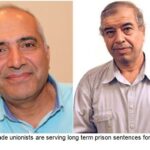
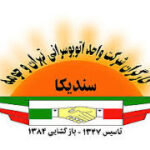


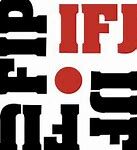
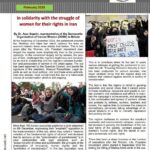


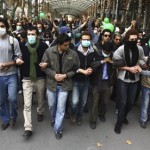
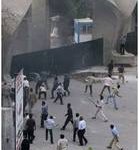
 Posted in
Posted in 